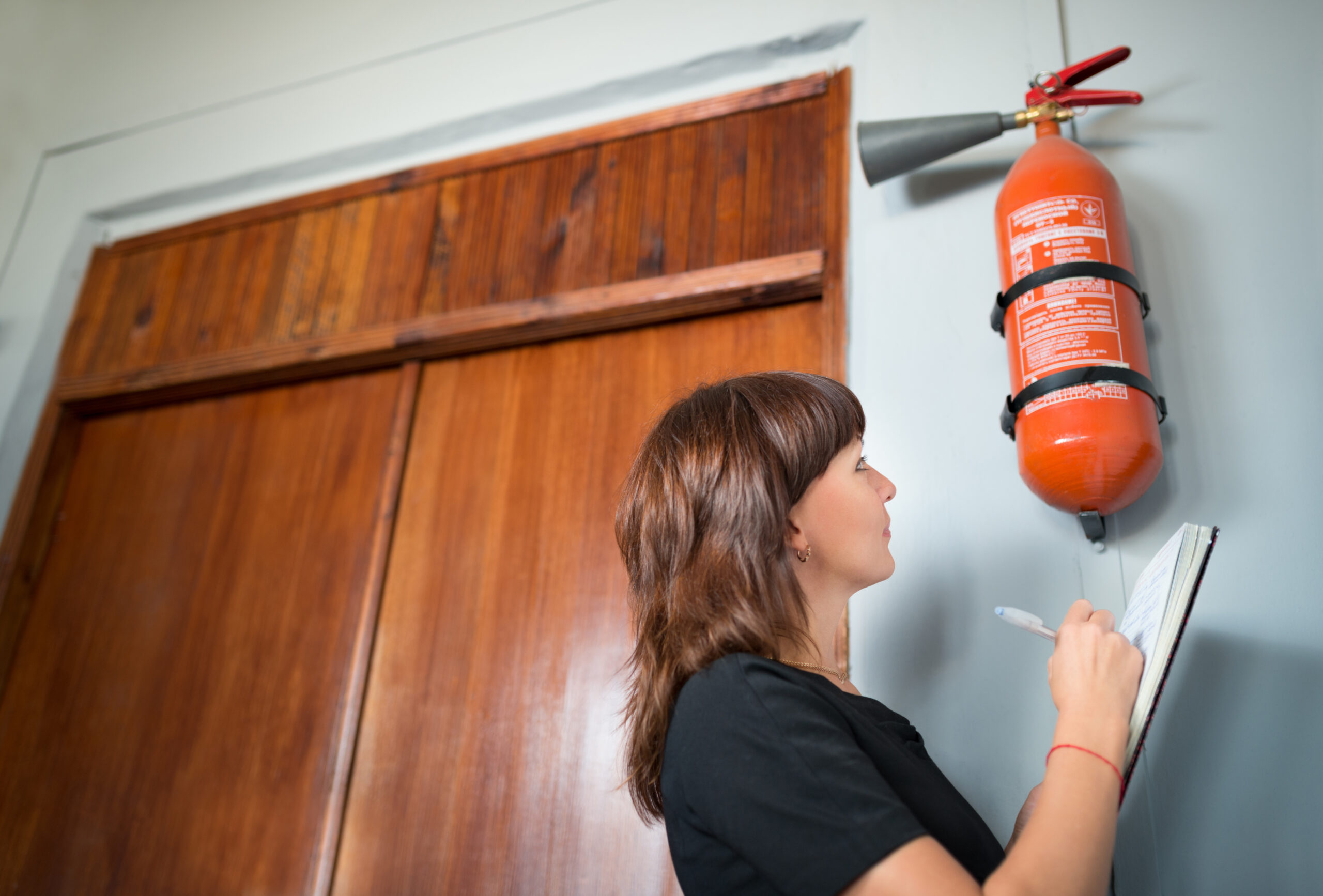Fire safety is not just a legal requirement, but a crucial factor in maintaining a safe environment in your workplace.
One of the key components in fire safety is the fire extinguisher, a device that can be life-saving when used correctly in the event of a fire.
Understanding Fire Extinguishers
But how do fire extinguishers work? In essence, they are devices that release a substance—either foam, water, or a special gas—that can smother a fire, reducing its heat and oxygen supply.
Different types of fire extinguishers are designed to tackle different types of fires, from electrical blazes to fat fires in a kitchen.
How Often Should Fire Extinguisher Be Inspected
So, how often should fire extinguishers be inspected? You can have monthly fire extinguisher inspections or annual fire extinguisher inspections.
According to the Occupational Safety and Health Administration (OSHA), fire extinguishers should be inspected on a monthly basis.
This inspection can be done by the business owner or designated personnel and involves checking for visible signs of damage, ensuring accessibility, and verifying that the pressure gauge is in the operable range.
In addition to monthly inspections, OSHA mandates that all portable fire extinguishers undergo a thorough annual inspection/maintenance check by a trained professional.
This rigorous yearly check involves a detailed examination of the mechanical parts, fire extinguishing agent, and the expelling means of the extinguisher, ensuring its readiness in case of a fire emergency.
Check out how to simply your fire extinguisher inspection here.
The Necessity of Regular Fire Extinguisher Checks
Regular checks of your fire extinguishers are absolutely vital to ensure they work when needed. Without these inspections, you might find an extinguisher failing during a fire because of a faulty valve or an insufficient charge.
Unchecked fire extinguishers have led to catastrophic outcomes, with damage to property and even loss of life.
The Inspection Process
A standard fire extinguisher inspection involves checking the pressure gauge, ensuring the safety pin is intact, looking for signs of physical damage, and verifying the date of the last professional inspection.
You should always ensure a proper inspection when you inspect extinguishers.
You then need to record all of this information. Avoid using pen and paper or Excel sheets to record the inspection process.
Make sure that a competent person is performing a thorough examination during annual inspections and monthly inspections.
It can be a nightmare to keep track of it all. You should use inspection software when performing your fire extinguisher inspections to make your life a lot easier.
Legal Requirements
There are legal obligations regarding fire extinguisher maintenance that businesses and property owners need to always adhere to.
Non-compliance can result in significant penalties, including heavy fines and, in some cases, imprisonment.
Check out our article on why your company should adopt inspection management software.
Conclusion
In conclusion, the importance and frequency of fire extinguisher inspections cannot be overstated. Stay compliant, stay safe—and remember, the consequences of skipping an inspection can be far costlier than the inspection itself.
Take the stress out of fire extinguisher inspections with our fire extinguisher inspection software. Book your FREE 30-minute demo today, no strings attached.

